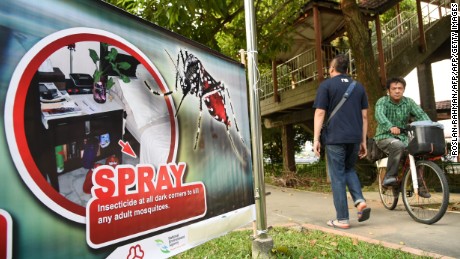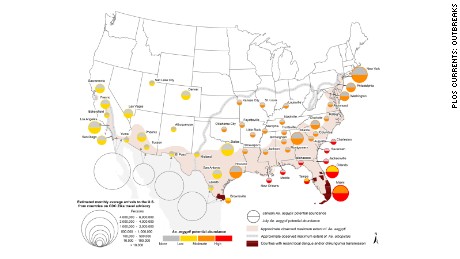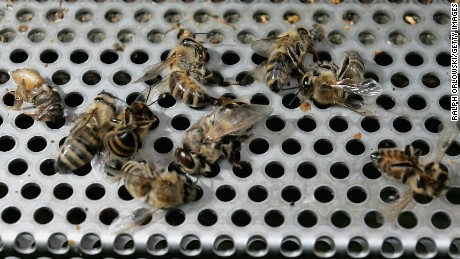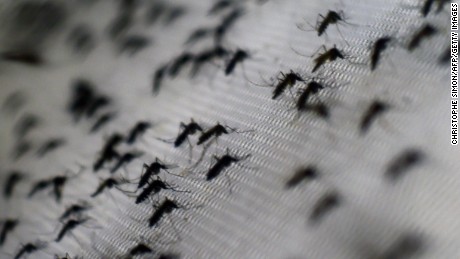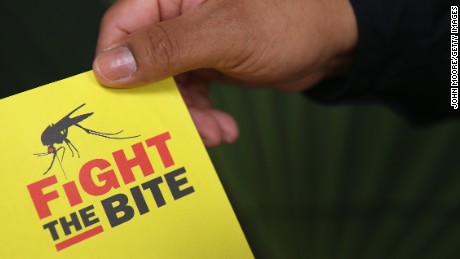Story highlights
- Surge in Zika cases in Singapore has raised concerns in the region
- A new study shows that 2.6 billion people across Asia and Africa could be at risk
(CNN)In just one week, Zika cases in Singapore have gone from zero to 258, raising concerns about a potential rapid surge in cases across Asia.
A recent study estimates that roughly 2.6 billion people in the region and Africa could be at risk of contracting the virus, which has been linked to the neurological disorder microcephaly in unborn babies.
It's not yet clear why Zika has spread so suddenly in Singapore. Many of the cases are thought to be locally-transmitted by the Aedes aegypti mosquito.
On Saturday, Singapore's Ministry of Health said analysis of two cases found they had likely evolved from a strain of Zika that was already circulating in Southeast Asia. Malaysia confirmed its first case of Zika infection in a 58-year-old woman -- who had visited her daughter in Singapore -- on September 1. The country reported its first locally-transmitted case on September 3, with authorities expecting more to come.
Zika's spread
In November 2015, Brazil declared a national public health emergency as cases of suspected microcephaly continued to rise.
In February 2016, the World Health Organization announced a global state of emergency over Zika, predicting as many as four million cases by the end of the year.
Singapore is not the only country in Asia to report cases of Zika -- Thailand has also seen widespread transmission in the three months, according to the European Center for Disease Prevention and Control (ECDC).
Are humid mega-cities a hub for mosquitoes?
With 5.7 million-strong populace packed mostly in dense urban areas, Singapore doesn't immediately strike you as the kind of place that would suffer long from a Zika outbreak.
But it's the city state's high population density and humid climes that offer the perfect breeding ground for the Aedes aegypti. And these are traits shared across many cities in the region.
"In Asia, you have megacities with populations between five to 10 million people. The Aedes aegypti thrives in these densely-packed urban environments," Eng Eong Ooi, the deputy director of the Emerging Infectious Disease program at Duke-NUS Medical School in Singapore, told CNN.
"When you have high populations of people and mosquitoes, it's a good recipe for both dengue and Zika to spread," he added.
The dengue link
Dengue is also spread by the Aedes aegypti mosquito, which Singapore goes to great lengths to control. But recent efforts to stop their spread clearly haven't worked.
In 2015, the government poured $72 million dollars into researching, preventing and educating the public on dengue, a tropical disease that triggers high fevers, headaches and skin rashes in those infected.
As well as urging citizens to wear mosquito repellent, the government recommends a "5-step mozzie wipeout" that instructs citizens on how to get rid of any pools of stagnant water in and around their homes.
Controlling the spread
Experts say containing Zika requires different measures in different countries.
The Aedes aegypti's ability to breed in everything from damp flower pots to small puddles on the ground presents a particular challenge to some of the more populous nations in Asia, where sanitation and access to clean water is poor.
"In Singapore, very few people would store water in waters tanks, whereas in places where water supply is not reliable, people would have to store water in large jars that would be a good breeding site for mosquitoes," explained Ooi.
"If the water supply is not consistent and households need to rely on them, you can't just remove them. Any mosquito control program has to be effective in that particular local area."
Modeling Zika's spread in Asia
Researchers behind the study which estimated 2.6 billion people were at risk of Zika in Asia and Africa also examined countries' ability to deal with an outbreak.
"We looked at the health care capacity of a countries, the volume of travel from areas where Zika is currently circulating, and the population living in areas where Zika could be locally transmitted and found that countries like India, China, the Philippines, Indonesia, Nigeria, Vietnam, Bangladesh were highest risk," Kamran Khan, study co-author and infectious disease physician at St. Michael's Hospital in Toronto, told CNN.
Khan wants his team's research to help governments with less-developed infrastructures and fewer health facilities to be able to deploy their resources effectively if they ever had to face a Zika epidemic.
The aim, he said, was for these countries to be prepared enough to prevent any outbreak from placing too much of a strain on already overburdened health care systems.
"It's also a call to the broader international community to say that assistance is need to address Zika as a global epidemic," he said.



